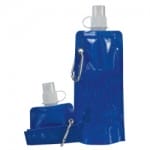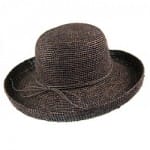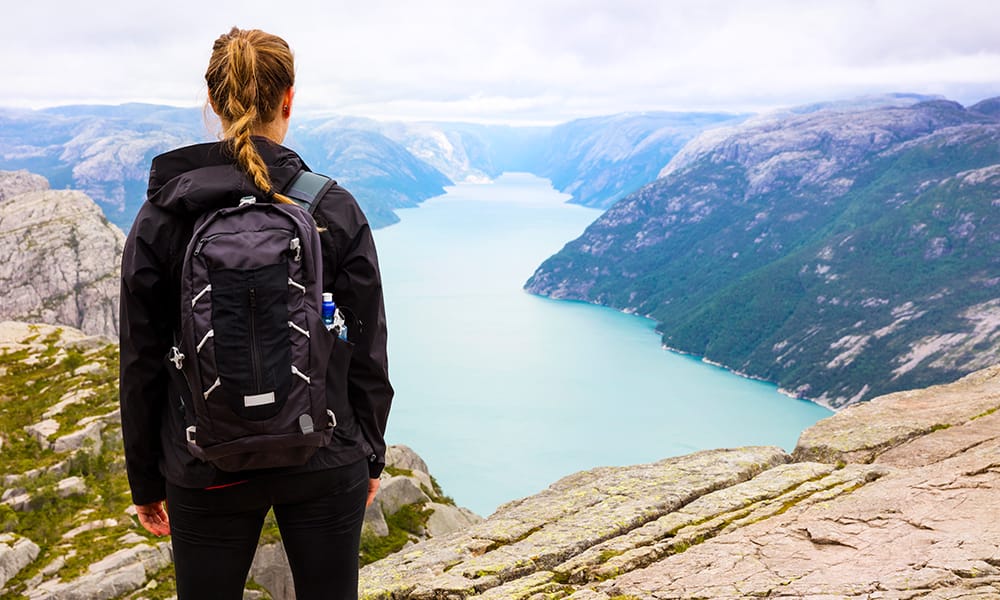There aren’t many experiences in life that offer you the chance to get away from the everyday stresses of life, experience the beauty of nature and view stunning scenery, immerse yourself in a world of peace and quiet while also challenging yourself physically. A hiking holiday can offer you all of this and so much more. However, a dream experience like this can quickly turn into a nightmare if you don’t haven’t packed the right items for your trip.
Plan ahead
The essential kit for a hiking holiday can be broken down into eight main categories. Spending a bit of time preparing for your holiday ahead of time, as opposed to a rushed pack the night before you leave can make a huge difference to the quality of your hiking experience.
Before you set off on holiday make sure you have travel insurance in place, and leave an itinerary with someone back at home so if anything does go wrong, someone knows roughly where you are.
What to pack…
For the purpose of this article we have only covered packing for a holiday of day hikes, so we don’t cover items such as tents and cooking materials.
1. Food and drink
Food and drink isn’t something you often think of packing for a holiday, but for hiking it is worth it. You will use a lot of energy while hiking, on average 300 calories an hour. However, this can be much more when trekking uphill or over difficult terrain. So, no matter how much you eat before you set off you will soon be hungry again. Pack some food which is easily accessible and doesn’t involve any preparation time; snack bars are handy to have. Also avoid perishable foods, especially if hiking in warm weather.
A good source of a quick boost are carbohydrate based energy drinks. If you feel your energy levels dropping take a quick drink and you’ll soon be back on track. As you are unlikely to know what provision will be available to you to buy at the start point of your hiking holiday it is advisable to pack them at home.
 As well as food and an energy drink, you will need plenty of water throughout the day. It is advisable to carry your water in numerous containers so you can evenly distribute them in your pack, so bringing a few containers of the right size from home can save you valuable holiday time shopping around when you arrive.
As well as food and an energy drink, you will need plenty of water throughout the day. It is advisable to carry your water in numerous containers so you can evenly distribute them in your pack, so bringing a few containers of the right size from home can save you valuable holiday time shopping around when you arrive.
Also carry a few chlorine dioxide tablets to purify water in case of an emergency, or consider a safe water drinking bottle which has filters inside.
2. Navigation
Whenever you head out into the wilderness it’s always wise to carry a form of communication such as a fully charged mobile phone with you (although bear in mind that in the wilderness phone signal can be patchy at best!). Ensure you have an up-to-date map of the area, preferably a waterproof one, a compass, a watch, and a GPS is a good idea if you have one.
3. Sun protection
 While hiking you will be exposed to the elements for potentially long periods of time. Even if it doesn’t look sunny you can get burnt through the clouds. A small tub of sun lotion, lip salve, sunglasses and a packable sun hat are all a good idea.
While hiking you will be exposed to the elements for potentially long periods of time. Even if it doesn’t look sunny you can get burnt through the clouds. A small tub of sun lotion, lip salve, sunglasses and a packable sun hat are all a good idea.
4. First Aid
No matter how careful you are accidents can happen so make sure you pack a first aid pack so you’re ready. Hiking injuries can range from the minor such as blisters, insect bites and mild sunburn, to more extreme problems such as broken bones. A good first aid kit will help you deal with all situations, even if it is just until further help arrives.
5. Illumination
Whether you intend to be out in the wilderness after the sun sets or not, make sure you have a torch, ideally a head torch and a spare set of batteries per person. You never know when you might need a guiding light!
6. Layers, layers, layers
While hiking you can experience a huge range in temperatures whether it be due to changes in weather conditions, altitude or your individual body temperature due to exertion. The best way to deal with this is to pack lots of layers that you can add or remove throughout the day.
Also ensure you pack waterproof layers. Once you get wet while hiking it is very difficult to dry off, and can lead to you getting cold.
Remember to bring something comfortable to wear in the evenings. You will want to relax in comfort after a hard day's hiking!
7. Footwear
The key thing to remember in this section is that before you pack your footwear make sure you have worn them in! The most common problem experienced on hiking holidays is blisters. It is also a good idea to pack spare shoelaces as although it sounds a minor problem a snapped shoelace can cause big problems when hiking.
When choosing which socks to pack avoid cotton as it absorbs moisture. If your feet do sweat you don’t want them getting wet and then cold, as well as rubbing on your skin.
8. Day pack
 Depending on the length of your planned hikes, and whether you will be stopping in a hotel each night or sleeping in the wilderness, your day pack may contain just a few items for a light hike, or everything you need to survive for an extended period of time in the wild. This will affect the size of your bag, but regardless of size your bag needs to be comfortable. When buying your bag choose a shop with knowledgeable salespeople. Explain what type of hiking you will be doing as well as your budget.
Depending on the length of your planned hikes, and whether you will be stopping in a hotel each night or sleeping in the wilderness, your day pack may contain just a few items for a light hike, or everything you need to survive for an extended period of time in the wild. This will affect the size of your bag, but regardless of size your bag needs to be comfortable. When buying your bag choose a shop with knowledgeable salespeople. Explain what type of hiking you will be doing as well as your budget.
Make sure you try the bag on in the shop and walk around with it on your back. Some brands offer different shapes for women and men due to the different body shapes. It is also advisable to choose a bag with a waterproof covering.
In addition to a waterproof cover, bring a large waterproof bag, such as a bin bag to put everything inside your bag in, just in case your bag becomes immersed in water. This should prevent all of your belongings getting wet.
Ready to go
With your carefully planned bag packed full of all the essentials you will need for a problem-free trek, all that is left for you to do now is enjoy yourself and make the most of what a hiking holiday has to offer!
——–
Guest post written by Evelyn, a freelance travel writer who works closely with a number of awesome travel services. She’s lived on both side of the Atlantic and remains a perpetual globetrotter, having visited over forty countries in the last twelve years (some of them more luxurious than others!)
